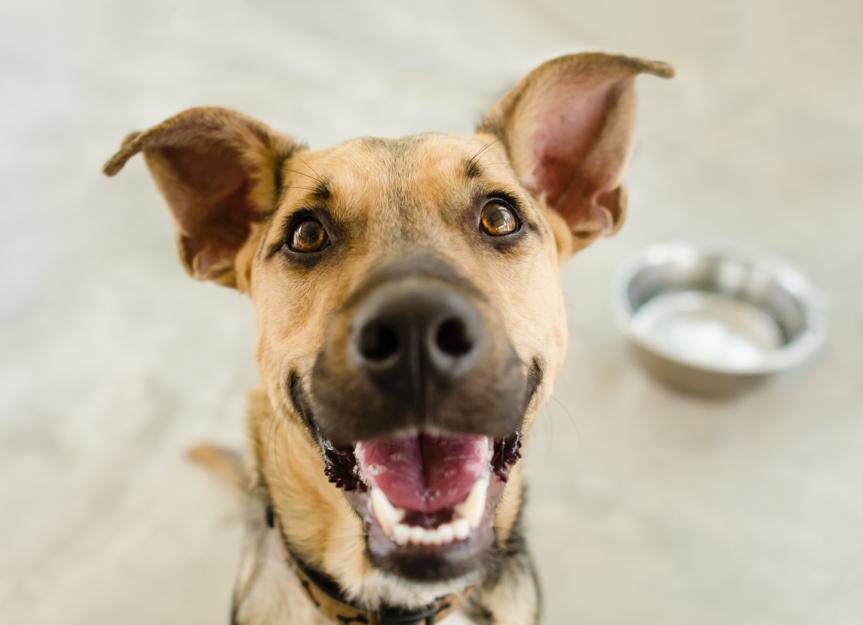Bailey Chairs for Dogs
The process of swallowing is complex. It requires coordination between the nervous system and muscles to move food and water through the mouth and into the stomach. The esophagus is the muscular, narrow tube that connects the mouth and stomach.
A ring of muscles at the top (called a sphincter) pushes food into this tube, which moves the food to the lower sphincter and into the stomach. Conditions such asmegaesophaguscan hinder the passage of food through the esophagus.
Veterinarians often recommend that pet parents use a device called a Bailey chair to let gravity help move food through the esophagus and into the stomach.
What Is a Bailey Chair For Dogs?
A Bailey chair is a tall, narrow box that provides support so dogs can eat and remain seated in an upright “begging” position. The chair is often used when dogs have megaesophagus, in which the esophagus becomes enlarged and cannot move food easily.
Also called a “dog feeding chair” or “high chair,” it was designed by a family with a dog named Bailey who had megaesophagus and needed to sit upright during and after eating.
A Bailey chair allows dogs to use gravity to their advantage. When a dog is seated upright, the esophagus is vertical, allowing gravity to move food down the esophagus and into the stomach.
When Does a Dog Need a Bailey chair?
Disorders that affect nerves and muscles (such as a neuromuscular disease calledmyasthenia gravis) often impact the function of the esophagus, leading to expansion of the esophagus.
Dogs with megaesophagus often regurgitate food. Regurgitation is passive, and dogs often simply hang their head and “spit up” undigested food. Depending on how long food has been sitting in the esophagus, it may even look like a tube of food was spit up.
Frequent regurgitation of food can lead to weight loss and malnutrition. In addition, a dog is more prone to accidentally inhaling (aspirating) food and can developaspiration pneumonia, a painful and potentially life-threatening situation.
Some dogs with megaesophagus respond well to medications that stimulate contractions of the muscles of the esophagus, but many need an altered feeding method to manage their condition. Bailey chairs give many dogs with megaesophagus the help and support they need to get food into their stomachs.
How Long Does a Dog Need to Sit in a Bailey Chair?
Most dogs quickly become accustomed to eating in a Bailey chair, with proper encouragement and a little bit of time. Dogs should remain in an upright, seated position for at least 10-15 minutes after eating (although 20-30 minutes is preferred because it’s best for dogs to rest after eating). This rest is important, because dogs with megaesophagus have a higher risk of accidental choking and aspiration if they move around too soon after eating.
Are Bailey Chairs Safe for Dogs?
A well-built Bailey chair is comfortable and, when used properly, very safe. It is best to stay close and monitor your dog while they are in the chair, in case the chair tips or a leg gets caught in an unusual position.
The recommended time of 20-30 minutes is important to avoid regurgitation. Dogs will be comfortable and happy to eat and drink without regurgitating or the risk of aspiration. Their overall health will improve by getting adequate nutrition.
How Much Does a Bailey Chair Cost?
Bailey chairs range in price, depending on the size of a dog. Prices typically range from just under $200 for the smallest-size dogs to about $400 for chairs designed for giant breeds.
Bailey chairs can also be built at home.许多在线资源provide step-by-step instructions for those who are handy.
Bailey Chair Alternatives
兽医通常推荐使用重力冥界p move food through the esophagus of dogs with megaesophagus. Some other strategies may be considered to replace the Bailey chair or for use in conjunction with it, depending on the condition’s severity.
Dogs with megaesophagus tend to do best when offered smaller, more frequent meals. Many dogs do well with three meals throughout the day, but some dogs with more severe disease benefit from five or six meals throughout the day.
Experiment with the consistency of the food. Some dogs benefit from eating food that has added water and is the consistency of gruel, while others do better with canned food that has been formed into bite-sized meatballs. Work with your veterinarian to determine if a high-calorie canned food or special diet would be most appropriate for your pet.
In dogs with more mild disease, simply elevating the food/water dish so they don’t bend their head and neck down to eat or drink can help. This may be done by usingraised food/water dishes. Some dogs can even be encouraged to put their feet on their owner and take food from their hands, or to put their feet on the first or second step of a step stool and eat off the top of it.
In small dogs, owners may be able to get creative and use a baby’s high chair to reach a seated, upright position. For larger dogs, some owners are able to use an upside-down barstool and blanket to create a makeshift Bailey chair. However, care must be used with this method, as the base of a fabricated Bailey chair is wider and less likely to tip than a bar stool.
If you are unable to manage megaesophagus by using these alternate methods, a Bailey chair may prove to be the best option. Always be sure to work with your veterinarian to determine the most appropriate treatment plan for your pet.
Featured Image: iStock/David Baileys
Help us make PetMD better
Was this article helpful?
